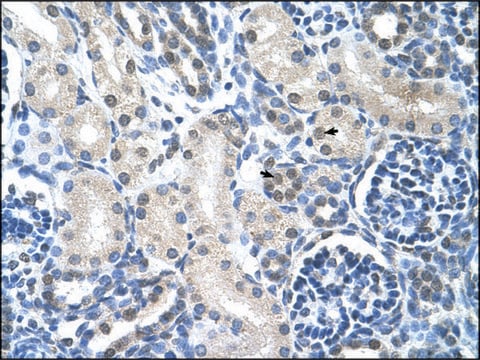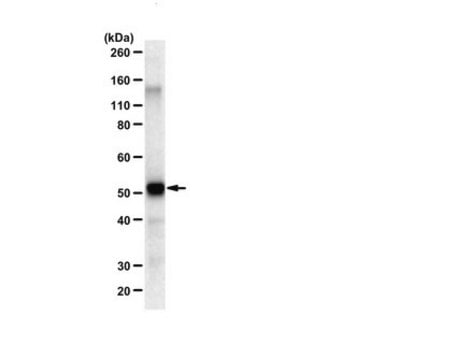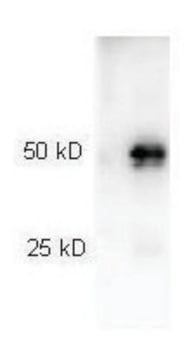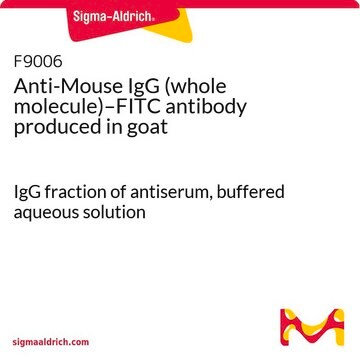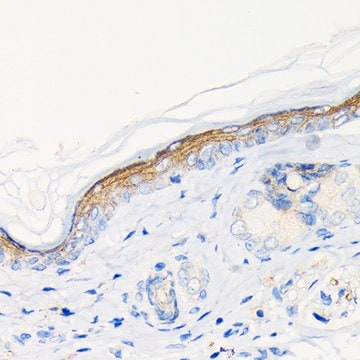SAB4200794
Anti-Involucrin antibody, Mouse monoclonal
clone SY5, purified from hybridoma cell culture
Sinónimos:
Anti-IVL
About This Item
Productos recomendados
biological source
mouse
Quality Level
antibody form
purified from hybridoma cell culture
antibody product type
primary antibodies
clone
SY5, monoclonal
form
buffered aqueous solution
mol wt
~68 kDa
species reactivity
canine, gorilla, porcine, mouse, human, owl monkey
concentration
~1 mg/mL
technique(s)
immunoblotting: suitable
immunofluorescence: suitable
immunohistochemistry: 2.5-5 μg/mL using human skin sections
immunoprecipitation (IP): suitable
isotype
IgG1
UniProt accession no.
shipped in
dry ice
storage temp.
−20°C
target post-translational modification
unmodified
Gene Information
human ... IVL(3713)
Categorías relacionadas
General description
In pathological conditions, involucrin expression may be altered. In psoriasis and other benign epidermal hyperplasias, involucrin expression appears closer to the basal layer than it′s normal expression. In squamous cell carcinomas and premalignant lesions, involucrin is abnormally increases and found to be reduced in severe dysplasias of the larynx and cervix.
Monoclonal Anti-Involucrin specifically recognizes human and mouse Involucrin. The antibody does not react with mouse epidermis, thus enabling the use of the antibody for study of human xenografts in nude mice. The antibody stains the upper spinous and granular layers in human skin and the cytoplasm of suprabasal terminally differentiated keratinocytes in stratified colonies.
Immunogen
Application
- Immunoblot
- Immunofluorescence
- Immunohistochemistry
- Immunoprecipitation
Biochem/physiol Actions
Physical form
Other Notes
Not finding the right product?
Try our Herramienta de selección de productos.
Storage Class
12 - Non Combustible Liquids
wgk_germany
WGK 1
Certificados de análisis (COA)
Busque Certificados de análisis (COA) introduciendo el número de lote del producto. Los números de lote se encuentran en la etiqueta del producto después de las palabras «Lot» o «Batch»
¿Ya tiene este producto?
Encuentre la documentación para los productos que ha comprado recientemente en la Biblioteca de documentos.
Nuestro equipo de científicos tiene experiencia en todas las áreas de investigación: Ciencias de la vida, Ciencia de los materiales, Síntesis química, Cromatografía, Analítica y muchas otras.
Póngase en contacto con el Servicio técnico

